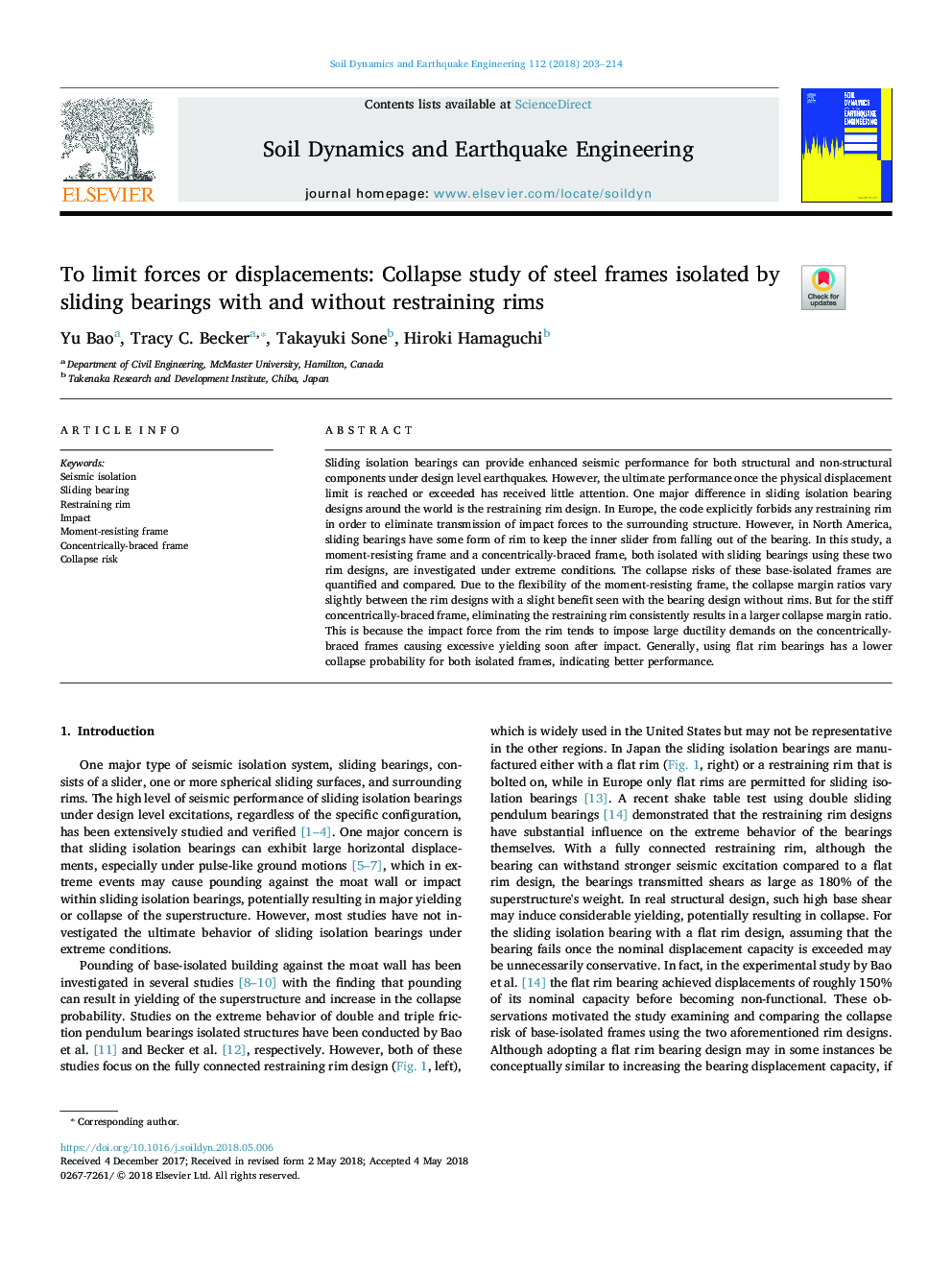| Article ID | Journal | Published Year | Pages | File Type |
|---|---|---|---|---|
| 6769934 | Soil Dynamics and Earthquake Engineering | 2018 | 12 Pages |
Abstract
Sliding isolation bearings can provide enhanced seismic performance for both structural and non-structural components under design level earthquakes. However, the ultimate performance once the physical displacement limit is reached or exceeded has received little attention. One major difference in sliding isolation bearing designs around the world is the restraining rim design. In Europe, the code explicitly forbids any restraining rim in order to eliminate transmission of impact forces to the surrounding structure. However, in North America, sliding bearings have some form of rim to keep the inner slider from falling out of the bearing. In this study, a moment-resisting frame and a concentrically-braced frame, both isolated with sliding bearings using these two rim designs, are investigated under extreme conditions. The collapse risks of these base-isolated frames are quantified and compared. Due to the flexibility of the moment-resisting frame, the collapse margin ratios vary slightly between the rim designs with a slight benefit seen with the bearing design without rims. But for the stiff concentrically-braced frame, eliminating the restraining rim consistently results in a larger collapse margin ratio. This is because the impact force from the rim tends to impose large ductility demands on the concentrically-braced frames causing excessive yielding soon after impact. Generally, using flat rim bearings has a lower collapse probability for both isolated frames, indicating better performance.
Related Topics
Physical Sciences and Engineering
Earth and Planetary Sciences
Geotechnical Engineering and Engineering Geology
Authors
Yu Bao, Tracy C. Becker, Takayuki Sone, Hiroki Hamaguchi,
